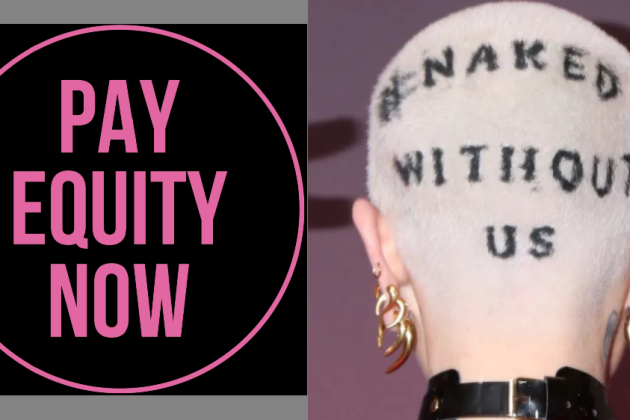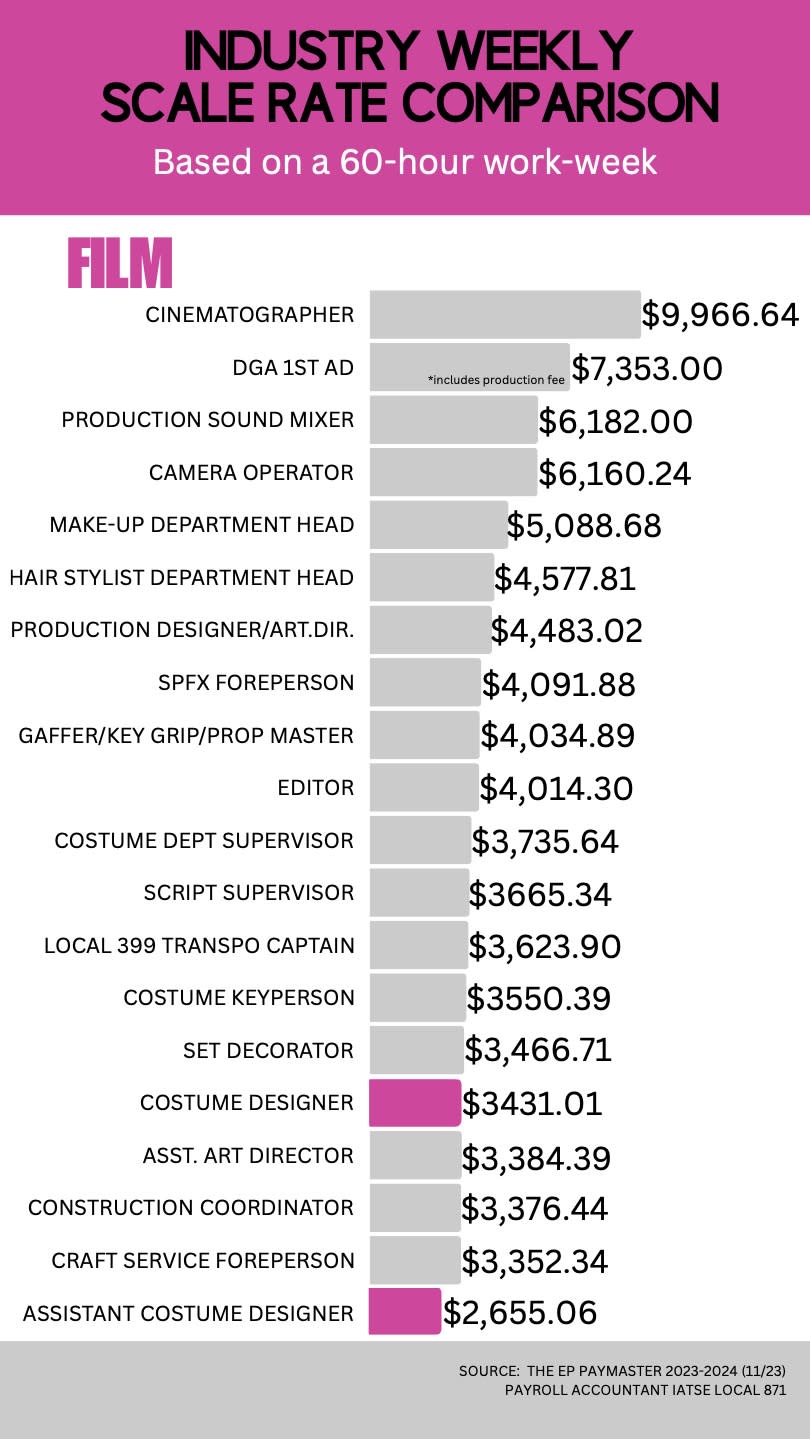Costume Designers on Pay and Gender Equity Fight: ‘We Are Artisans and We Should Be Respected’

Costume designers are stepping up their decades-long fight for pay equity and gender equity.
On Thursday, Hollywood costume designers launched Pay Equity Now, a movement designed to spotlight longstanding pay discrepancies. Emmy award-winner Ariyela Wald-Cohain (“Waitress”) explains, “Costume design has historically been viewed as ‘women’s work’ and due to the lack of understanding of our job, there has been a lack of respect for our craft.”
More from Variety
Costume Designers Call for Pay Equity: 'Our Work Is On the Most Important Real Estate in the Frame'
Costume Designers Fight for Pay Equity by Sharing Wage Discrepancies
Costume Designer Jenny Beavan's Oscar Suit Honors Guild's Pay Equity Fight
With IATSE Basic Agreement negotiations set to start in March, the guild is pushing forward with a call to action. Among the four-step plan, costume designers should ask their agents to demand the same pay as department heads such as production designers or directors of cinematography, and to share their salaries and terms of their contracts with costume designers who are working for the same studios.
Costume designers are key department heads on a set. Aside from being key collaborators with production designers, cinematographers and directors to tell a story through their craft, they’re often the first on set and last to go home, sometimes working 18 hours a day before their day starts over.
And yet, costume designers, assistant costume designers and Illustrators rank among the least compensated professionals in the film and TV industry. A noticeable wage gap becomes apparent when considering what is often a 60-hour work week: Scale rates for costume designers, who are 87% female, under the IATSE Basic Agreement are approximately 30-65% lower than those of their creative department head counterparts, which are 82-93% male.
Wald-Cohain explains that like production designers, costume designers are department heads and are charged with budgets and hiring a team and must consider many other factors when shooting. Speaking with Variety, “Oppenheimer” costume designer Ellen Mirojnick broke down her checklist of what she needs to consider when tackling a project during the pre-production process. “Where are we shooting? Who will I hire? Who will be my supervisor? Who will be my assistant? How many do I need?”
Mirojnick notes working on location means that more factors need to be taken into consideration, from shipping to storage. But she always asks, “Who will be the buyer? Who will be the makers? Do you set up a room – with cutters, tailors and stitchers?” She adds, “I have to determine, from a very early point, the whole foundation of the film, what do I need to initiate?”
Furthermore, once casting takes place, design ideas can shift.
Mirojnick explains a director might often discuss ideas about characters, but also who they have in mind for casting. “A lot of the time, a director will ask, ‘How do you see that character?’ and I might have a point of view. But that changes when the actors are cast, and that requires another round of discussions or simple imaging to translate how I will approach it. I need to see how that director sees it, and if there is any conflict with the producer, the studio, the cinematographer, or the production designer. If so, I want to eradicate all of that conflict, which we’re faced with, often, from the get-go.”
Trish Summerville, for example, who created the costumes of the latest “Hunger Games” movie, had to reconfigure sizing after Rachel Zegler was cast. She had designed the film’s rainbow dress with a different actress in mind.
When Zegler was cast, Summerville didn’t just have to fly back and forth to London for fittings, she had to rework her designs and costumes tailored to the petite star.
“Do you know how much costume designers bring to the table?” asks Oscar-winner Mayes Rubeo, who worked on “Blue Beetle” and “Jojo Rabbit.” She stresses being a costume designer is far from a glamorous job. “It’s hard work.”
A typical day for her begins with getting together with her supervisors and assistant designers to see what they’re tackling. “If I’m doing a lot of costumes, I usually have a warehouse with cutters, seamstresses, leather workers and dyers. I go to them one by one and I will answer every single question about every single costume we’re doing and move on.”
Next, she’ll meet with department heads, and in between she will finish working on fabrics and connect with actors on fittings. “It’s nonstop,” she says.
Furthermore, costume designers are creating multiples of their outfits – not just one. They’re fitting for the actors, the stunt doubles and others. Ask any costume designer how many outfits they create for a movie or TV series, and the answer will often be “hundreds.”
There is one way costume designers could earn more, and that is through merchandise or tie-ins. But Rubeo says, “We get zero residuals. We’re not even allowed to show our artwork.”
Unless a costume designer can afford to negotiate in their contract, their creations can be made into merchandise such as Halloween costumes or toys, and they never see a cent.
The designers are asking producers and studios to recognize that they are responsible for every costume seen on camera, they are trendsetters influencing the latest fashion and Halloween trends, and that they are department heads working tirelessly from the moment of hire until the project’s completion — and should therefore receive equal compensation alongside their creative department head peers in the industry.
“We are artisans. We need to be respected. We work in an industry that should be give-and-take, but the give is not so big and is a little restricted,” states Mirojnick.
Wald-Cohain remains optimistic in the quest for pay equity, in a year where IATSE basic agreement contracts begin negotiations in March, She says, “Costume design is powerful and its impact is universal. We hope that by highlighting our tireless work as magicians behind the camera we can ensure our contribution is recognized and compensated fairly and equally to our creative peers in production.”

Best of Variety
From 'Killers of the Flower Moon' to 'Eileen': The Best Book-to-Screen Adaptations to Read This Year
The Best 'Sopranos' Merch to Celebrate the Show's 25th Anniversary
Sign up for Variety’s Newsletter. For the latest news, follow us on Facebook, Twitter, and Instagram.

